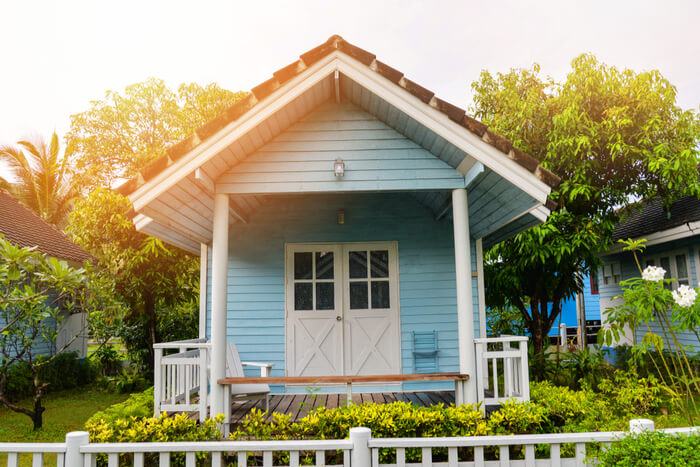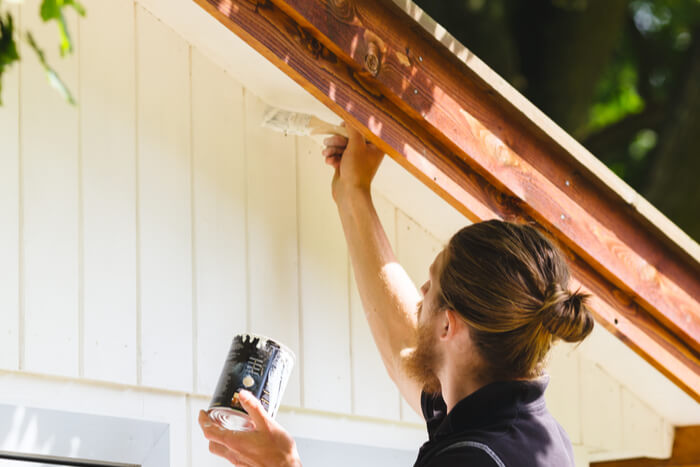Log cabins are beautiful timber structures that offer a comfortable, warm and welcoming atmosphere. From small log cabins to full-size houses, a huge variety of designs and floor plans are available. But like any other type of structure, they require maintenance. Log homes are not your ordinary buildings and it takes thorough and careful maintenance to protect and preserve the beauty and durability of your log home.

In order to keep your log house or log cabin looking beautiful and ensure its longevity, protecting it from UV rays and atmospheric conditions is important. Log homes are continuously exposed to damaging elements such as wind, sun, snow, rain and lots of dust and sand. Luckily, keeping your log house protected from the weather conditions is very easy and trouble free. In treating your log timber, a few coats of a high quality exterior stain will prove to be of great use. Stains not only provide a polished and rich look, the specially mixed formulas can actually provide a shield to fight extreme exposure to UV light, termites, mould, fungus, and a number of severe weather conditions like high winds, rain and dust.
Applying a log stain is one of the most popular and effective methods to protect and increase the lifespan of your log cabin. Log stains are formulated to protect log houses from the harmful elements, and assist in preserving the beauty of your log cabin and prevent the wood from rotting. There are a huge variety of stains available, providing different types of finish and colour to the wood. Depending on the finish you require for your house, and the colour you desire, you can choose which type of stain is best. But there are some things that you should consider before and after staining a log cabin. And if you don't have a log cabin and would like to buy one, visit our website. So, if you have one, these tips on staining a log cabin may be useful:
It is advised that you apply the log cabin in good weather, as it can take a few days for the stain to dry. You should check the weather forecast for the coming few days to ensure that the weather will be clear, giving your stain sufficient time to dry and establish on the logs.
The log surface must be appropriately prepared before applying any type of stain. The logs of the log cabin should be cleaned of surface debris and dirt, mould, previous stain, splinters and other particles. Once the surfaces of the logs are cleaned, thoroughly check the logs to check if there are openings or cracks that need to be filled.
Make sure you tape off all doors, windows, light fixtures, concrete footings etc. using plastic and tape, so that you don’t accidentally get any log stain on the log cabin accessories. Preparation work can seem time consuming and tedious but the preparation you do before actually starting the staining project will help you save time later. Once you’ve masked off all the accessories, the logs are clean and the openings of the cabin are sealed, you are all set to proceed with the staining.

It is important that you know that there is a difference between interior and exterior stains. Exterior stains contain mildicide as well as fungicide and as a result they are not good for the interiors of the log cabin. You can employ the assistance of an expert professional when choosing the stain for the interior and exterior of your cabin.
Log stains differ quite a lot and there are lots of varieties available. It is recommended that you choose a stain that is made specifically for log cabins. Usually, these products will weather better and you will have a better probability of compatibility with your caulking and chinking materials.
It is essential that you choose a log stain wisely, after knowing all the facts available. The log stain can be oil based or water based. It is crucial to know that oil stains are generally paraffin or linseed based oils. Just like latex stains, some linseed oil stains also have the characteristic of forming film. They can blister and peel and show traffic patterns and lap marks. They offer protection but are difficult to maintain and generally need recoats within every six months to keep the fresh look of the wood. In addition, linseed stain being a vegetable based product, feeds mildew.
Using paraffinic oil based stains is recommended for log cabins. These types of stains are true penetrating and don’t form a film. As compared to linseed oil, paraffinic oil is of a thinner consistency and thus absorbs deeper into the grain of the wood. Being petroleum based, it doesn’t feed or attract mildew. Also it doesn’t leave any traffic patterns, lap marks, drips etc. and absorbs completely into the wood leaving nothing to peel or blister.
If you want to retain the look and feel of your log cabin, then pigmented or semi-transparent stain can help. But, if you don’t have any such requirements or picture of your ideal residential log house in your mind then a huge variety of high quality stains and wood finishes are available to choose from. You can find amazing log stains in a assortment of wood colours including oak, walnut, mahogany, white pine and more.
Generally, stain is applied using a brush or sprayer. It is best to use a sprayer rather than a brush when applying wood stains as it helps to apply the stain more evenly. Using a brush is recommended when doing brush backs and touch ups. Apply a heavy and thick coat using the sprayer and ensure all the areas of the log house are covered. Pay special attention to the ends of the logs, as the log ends are the most likely spot for moisture infiltration as well as pest infestation and bugs. In addition, after the first layer has dried properly (one or two days later), applying a second layer of stain is recommended.

Stains wear off with time, making restaining very important. After some time the logs start looking lifeless. So, when considering restaining, you need to strip the stain to put the new stain on. Also, remember before you reapply the stain to restore your log cabin, take time to examine the logs, to find about the mould growth or rot. Proceed further only after replacing decaying wood with new wood.
We hope these tips will make staining your log cabin easier and more effective.












